China release 丨 Inheritance and promotion of Bai Zhanda dyed, they are not just on their own feelings
Author:Chinese network Time:2022.08.11

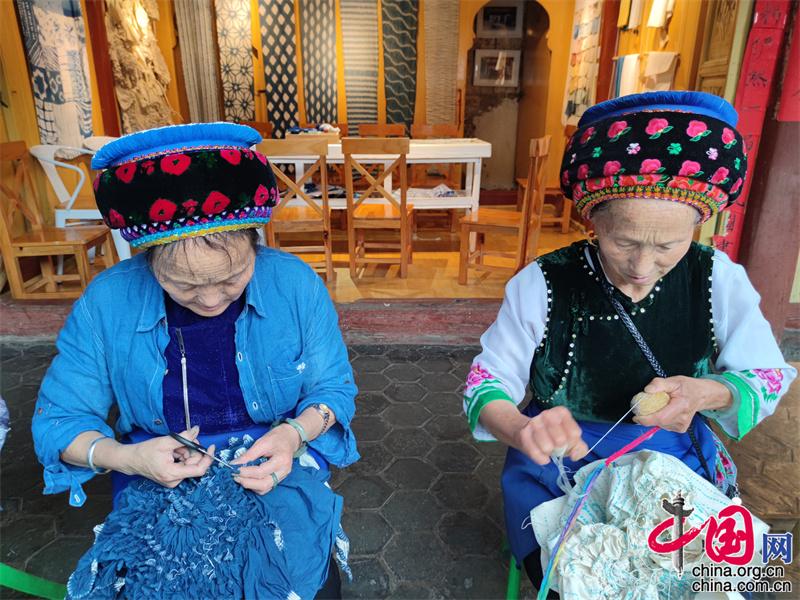
On August 5, 2022, Zhoucheng Village, Xizhou Town, Dali, Yunnan. Two old Bai people produced tie -dye handicrafts. China Net reporter Peng Yao Photo
China Net August 11th (Reporter Peng Yao) In the small courtyard in a small courtyard in Zhoucheng Village, Xizhou Town, Dali, Yunnan, the old Bai ethnic group wore a needle and tied on the cloth. One of the steps. One side of the white scarf, through a series of processes such as drawing, printing, printing, tie flowers, soaking, drilling, sinking, oxidation, removal, rinsing, drying, drying, etc., to become exquisite handicrafts in the hands of tourists.
Bai Zharan has a thousand years of history in Dali. In 2006, it was included in the first batch of national intangible cultural heritage protection list. In order to inherit this traditional skill, Zhang Hanmin and her husband Zhang Bin resigned to work in Beijing to start a business. Through the Dali Bai Fa Dya, handmade weaving, cultural experience, and public welfare community schools, more differences will be made. The development and presentation of innovation.
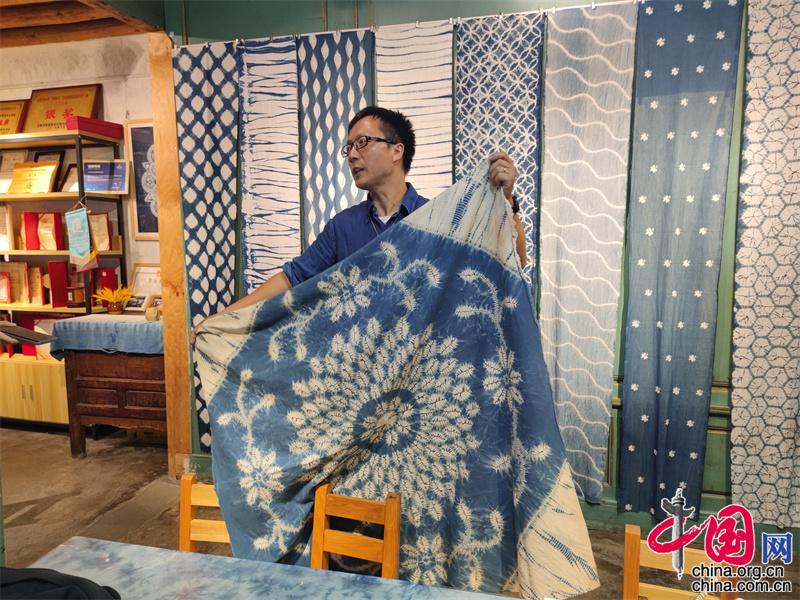
On August 5, 2022, Zhoucheng Village, Xizhou Town, Dali, Yunnan. Zhang Bin showed the finished product. China Net reporter Peng Yao Photo
Zhou Cheng is known as the hometown of the Bai tribe. In recent years, Zhang Hanmin returned to the old house of Zhoucheng, but found that the hometown in the memory has changed quietly. The scenes of sisters and aunts tied together and the sound of woven fabrics in the alleys became less and less.
"A weaving grandma sighed to us, I do n’t know how many years they can be woven, and fewer and fewer people who buy cloth. When we come back later, the weaving machine is no longer there, and the old man has died. . "This incident touched the couple very deeply." Without more people support, these traditional handicraft industries may gradually disappear. We originally engaged in work in the field of poverty alleviation and public welfare, so we wanted to come back to do something for my hometown. On the one hand, realize self -worth, and on the other hand, you can take care of your loved ones. "
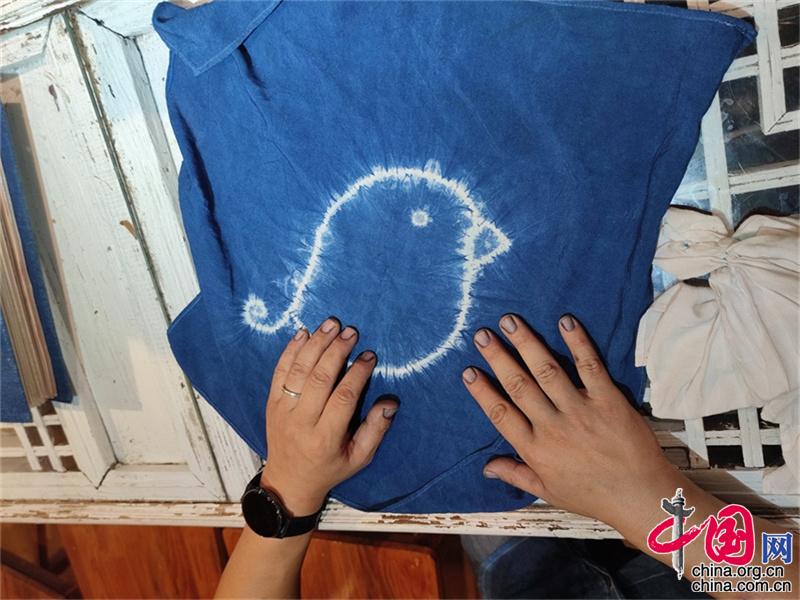
On August 5, 2022, Zhoucheng Village, Xizhou Town, Dali, Yunnan. Zhang Bin showed the finished product. China Net reporter Peng Yao Photo
The two initially started from studying and rural tourism, and contacted the veteran artists in the village to share with tourists to share tie dyeing skills. But they gradually realized that this method has little effect on promoting the inheritance of tie -dye. So they started to learn craftsmanship, conduct research, and find the path of breakthroughs.
"In everyone's cognition, a handicraft is the same as the cloth produced by industrial. The price of tie -dye products is very low and the labor cost cannot be used, so no one can do it." Zhang Bin believes how to highlight it The value of tie -dyeing products is a topic that needs to be thought and exploring.
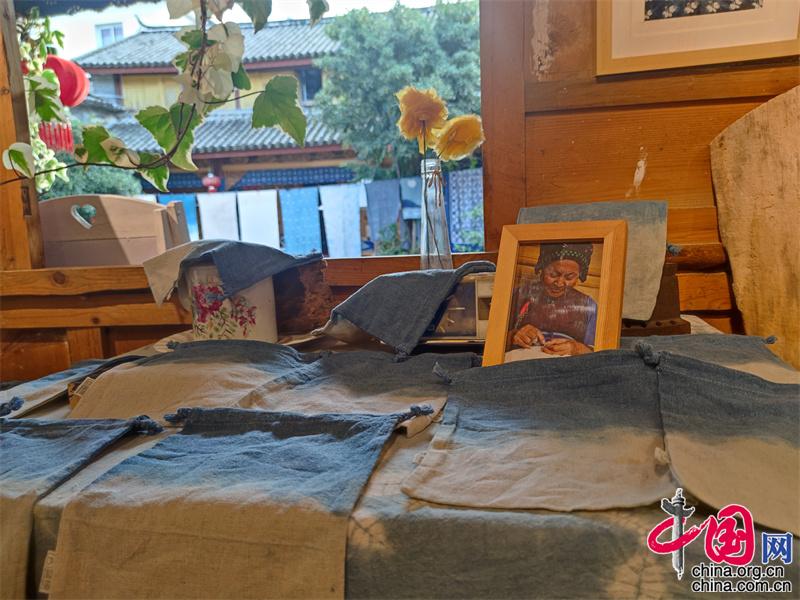
Dye dyeing workshop located in Zhoucheng Village, Xizhou Town, Dali, Yunnan. China Net reporter Peng Yao Photo
Zhang Bin and Zhang Hanmin not only learned the arts in Dali, but also went to Zhejiang, Guizhou, Sichuan, and Taiwan to study in many places of memory of some local veteran artists. At the same time, 4 stores are opened in Dali Ancient City, Xizhou Ancient Town and other places, allowing visitors to understand the value of tie -dyeing and recognition in the interaction process.
Zhang Bin refers to his company as a "community workshop". There are 22 full -time, more than 50 part -time staff, and many indirect participation staff. The production of tie -dye products and other projects brings certain economic benefits to local families, which also drives their enthusiasm for participation. At the same time, the workshop cooperates with hotels and catering companies to provide product display and sales. At present, the annual output value is about 4-5 million yuan.

On August 5, 2022, Zhoucheng Village, Xizhou Town, Dali, Yunnan. Zhang Bin showed a tie -dyed color card. China Net reporter Peng Yao Photo
In Zhang Bin's mind, blue is the representative color of Dali, like the spirit of the Bai people. The raw materials of tie -dyed stains are derived from Banlangen. It has been planted in Zhoucheng in a long time ago, but it has become less and less now. The workshop attempts to restore the planting of Banlangen, use leaves and stems to make dyes, study related technologies, and successively use osmanthus and walnut skin as a dyed raw material to develop more than 50 color cards for Dali local plant dyeing. "Villagers can collect abandoned walnuts for us, and they can also increase a little income." Zhang Bin said.
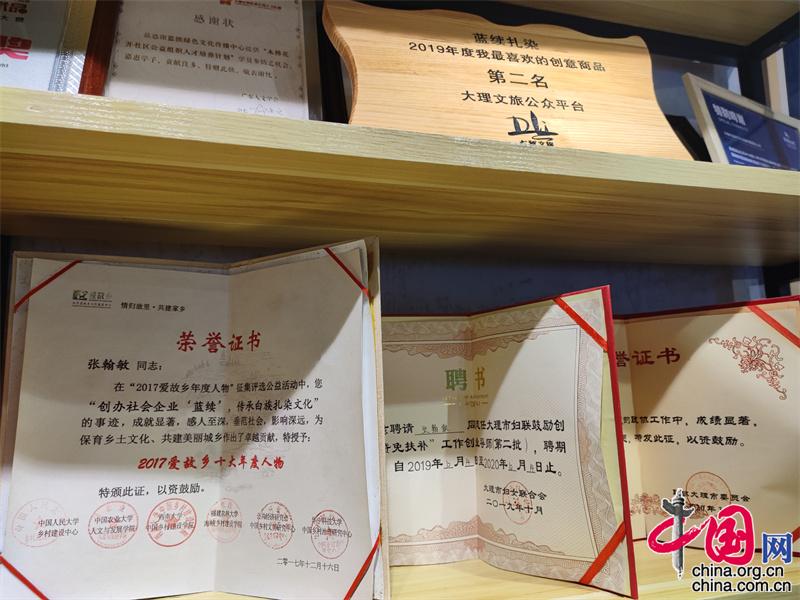
Zhang Bin and Zhang Hanmin's couple have won many honors. China Net reporter Peng Yao Photo
As a non -genetic practice, the workshop holds a public welfare -dyeing competition every year to do skill training for local women, invite scholars and experts to communicate, and start a research and training plan, which is more than 50 tie -dye hobbies from all over the country. Personal course training makes them a transmitter of tie -dye culture.
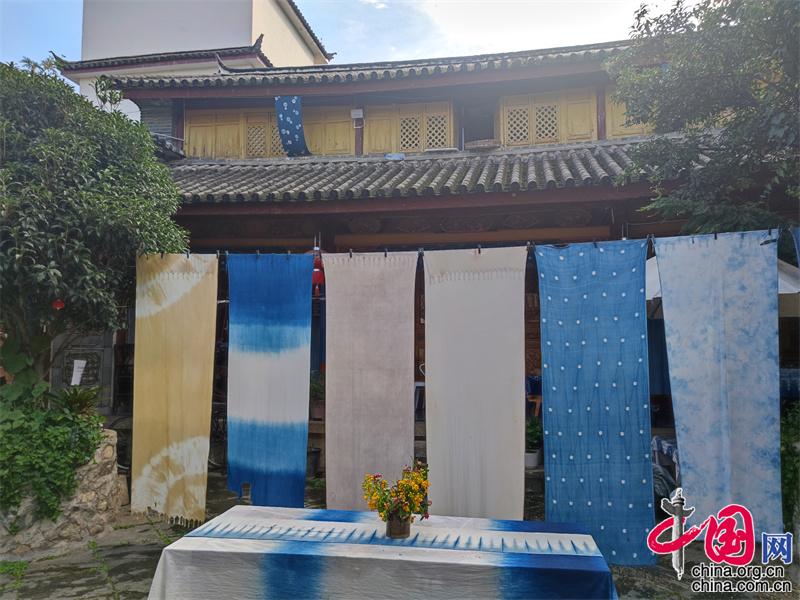
Dye handicrafts. China Net reporter Peng Yao Photo
"I am still learning weaving. The dozens of elderly people who have taught weaving now are only two healthy. Reserving traditional craftsmanship is to retain our culture, continue our lifestyle, and the beauty of the countryside. "Zhang Bin was responsible for inheriting traditional craftsmanship and time was urgent. However, Zhang Bin also noticed that there are more and more young people who have come to the practice office in the past two years, and their love for national tide and Chinese culture has injected new vitality into the old craftsmanship.
"In the future, how to combine non -heritage protection and rural revitalization to promote the development of tie -dyeing is a issue that we will continue to explore. I hope that in the future, we can promote traditional handicrafts such as Bai Tie dye to the whole country and the world." Zhang Bin said.
- END -
[Anchor Tancun] Shangyang Baishi Village: Draw a new picture of the revitalization of the countryside

The industry leads the rich and livable rural areas. In recent years, Baishi Villa...
A new case of a confirmed case of Changshou District, no social activity trajectory
On July 26, the Changshou District found a new case of new coronary pneumonia in the isolated control personnel, which was the close contact with the new crown pneumonia reported by the Changshou Dist